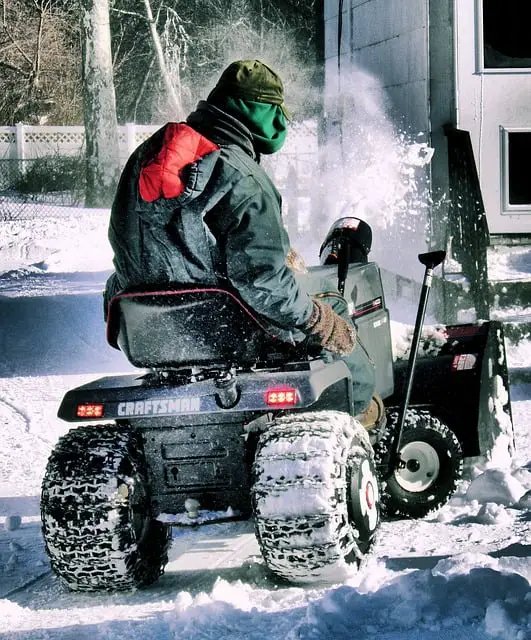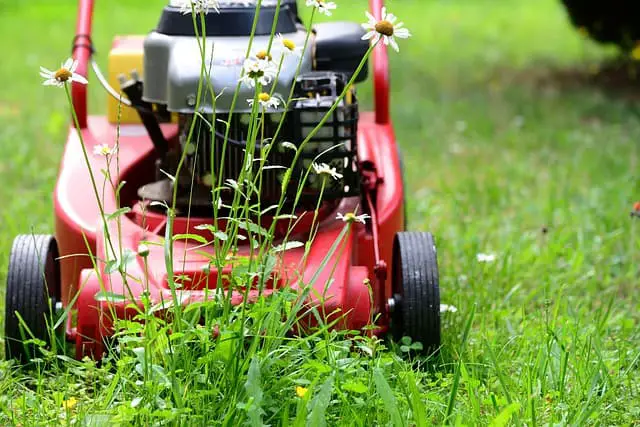To start a snowblower after it’s been sitting, first add fresh fuel and stabilizer to it after draining the tank. If it still won’t start, check the spark plug to see if it’s damaged and clean the carburetor. Always try to start your snowblower about two weeks before the first storm.
It’s that time of year again. Everything is beautifully coated in white, the holidays are coming up, and, unfortunately- you need to blow snow. It’s important that your snowblower is in tip-top condition. If your snowblower isn’t starting, here are some troubleshooting tips.
When should you first try to start your snowblower?
You should always try to start your snowblower before you need to use it. Once that snow falls, you’re stuck with it. Especially if you have a large area of snow to clear, you don’t want to end up with a shovel.
If you test your snowblower too early, you run the risk of it clogging up again in the cold weather between when you tested it and when you need to use it. But if you test it too late, you may not have time to order the parts you need to fix it.
A good middle ground is to test it roughly two weeks before the first storm.
Are all the switches in the right position?
Snowblowers have many switches that all need to be in the right position in order for the engine to work. Here are how the switches should be set:
- The throttle should be on High.
- The fuel shut-off valve should be Open.
- The choke should be on Full.
- The run switch should be On.
The ignition key also needs to be inserted and properly positioned. The dictionary states that ignition keys are used to connect the battery to the ignition system.
Some snowblowers have red toggle switches, which need to be on Run.
Did you try changing the gas?
If you forgot to add a fuel stabilizer before storing your snowblower, you need to start fresh.
When gas sits, over time it can clog up the system. This is the main reason snow blowers have trouble starting after sitting all summer.
First, use a siphon pump or the fuel line to drain the old gas.
Now, pour in a fuel stabilizer as well as fresh gas.
What are fuel stabilizers?
Berry Man Products explains that a fuel stabilizer is a solution that creates a protective layer between the gas tank and the fuel.
It is usually made from petroleum products. The fuel stabilizers prevent the gasoline from evaporating, which in turn prevents it from ruining your carburetor.
Did you prime the engine?
Engines will not work unless you prime them. Priming engines is extra important if they have been stored somewhere cold.
Priming the engine pumps some fuel into the carburetor. This can ignite easily.
To prime the engine, push the primer three to five times. The primer will be a rubber bulb. You should start the blower right after you prime it.
You may have to repeat the process a few times if the engine has been sitting in the cold for a long time, but don’t do it too many times because you will flood the engine.
Did you clean the carburetor?
Old gas may be clogging the carburetor if it still doesn’t work after you’ve added a stabilizer and changed the gas.
To fix this, you need to clean the carburetor completely with a carburetor cleaner.
Use the owner’s manual to find where your carburetor is. If you lost the manual, there are websites that have a database of manuals.
To clean the carburetor, first you remove the fuel bowl to reach the emulsion tube and main jet. Then use the carburetor cleaner to spray the main jet and center opening.
Screw everything back together and your machine should start after you prime the engine.
What is a carburetor?
A carburetor supplies spark-ignition engines with a mixture of air and fuel.
A carburetor is made of an accelerator pump, an emulsion tube, an air-flow restriction, a main jet, an idling jet, a choke, and a chamber that holds liquid fuel.
Did you check the fuel filter and fuel line?
A clogged or damaged fuel line can prevent your snowblower from starting after it’s been sitting for a long time.
Check to see if it is leaking, cracked, or kinked anywhere. Test if it is still pliable and flexible. If it has gotten hard, you need to replace it.
While checking the fuel line, you should also check the fuel filter to see if it is damaged or clogged, and replace it if you need to.
Do you need to replace the spark plug?
Spark plugs are often the fault of snowblowers that won’t start.
To reach the spark plug you have to disconnect the wire that leads to it. Use a deep socket wrench to unscrew it.
Look at the spark plug and see if there are any carbon deposits. You can clean it with a carburetor cleaner.
If the carbon buildup is insurmountable or if the electrode or ceramic insulator are damaged, you are going to need a new spark plug.
For best results, you should change out your spark plug each season.
Be sure to get a spark plug that fits your specific snowblower. This information should be in the owner’s manual.
How do you stay safe while starting a snowblower?
There are many safety considerations when starting a snowblower.
- First, you should avoid wearing clothing that is loose. Loose clothing can get tangled up in the moving parts of snowblowers.
- Make sure your footwear is sturdy and has good traction. You don’t want to slip and fall while using your snowblower. Consider boot grippers.
- Stay focused.
- Do not start your snowblower inside a shed or garage. Always start it outside to avoid fumes building up.
- Use ear protection. Snowblowers are loud enough to cause hearing damage.
- Be careful about where you blow your snow.
- Don’t blow snow if children are present.
- Take plenty of breaks.


